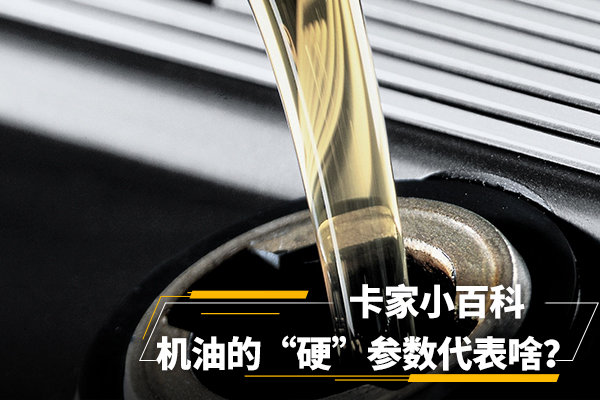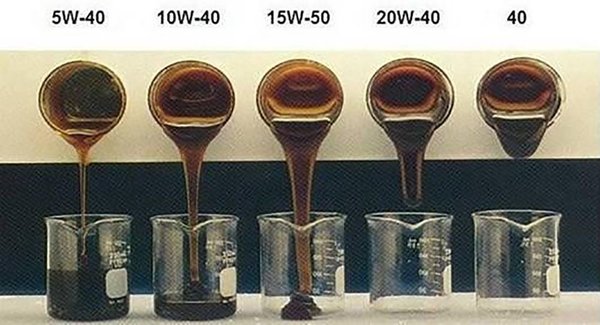24
2025
-
07
Truck Encyclopedia (15): What are the "hard" parameters of engine oil?
I believe that many cardholders have been "brainwashed" by various fancy advertising slogans on the lubricant packaging when changing the oil.
The biggest role of engine oil is to lubricate and protect the engine. Many oil guarantees have similar slogans such as extended oil change, high temperature resistance, wear resistance, and oxidation resistance. But how do these protective properties manifest? What indicators can we see from the performance of engine oil?
Today, the Kajia Encyclopedia will give you some dry goods - those hard indicators in engine oil.
▎What is the "hard" indicator of engine oil?
In addition to the viscosity of the oil, the type of oil (mineral oil, semi-synthetic, fully synthetic), there are many indicators and parameters of the oil. These indicators are directly related to the performance of the oil, which is the "hard" indicator that we will introduce.
We take two products, 15W-40 and 20W-50, from a well-known lubricant brand, as examples. In this diagram, you can see that the specific parameters of engine oil are divided into:
Features (basic parameters)
Grade (Viscosity Grade)
Sulfate ash
flash point
Kinematic viscosity at 100°C
Kinematic viscosity at 40°C
Pour
Total alkaline
Viscosity index
The indicators presented here, which we call "hard" indicators, are typical parameter values for engine oil.
So what do these parameters mean? Let's talk about them one by one.
● Oil certification
CF-4 is a certification standard from the American Petroleum Institute (API), and the initials "C" indicate that the oil is for diesel engines. "F" indicates the grade of the oil, and the further you go, the higher the grade.
CF-4 is a relatively old engine oil certification, and diesel vehicles in the second period of China are more used, and now the more common diesel engine oil certification is CH-4, CI-4, CJ-4, etc.
● Viscosity grade
SEA 15W-40 is a viscosity grade specified by the Society of Automotive Engineers (API).
Winter engine oil, represented by the English letter W, common winter engine oil is 0W, 5W, 10W, 15W, 20W, 25W, etc.
The number in front of W indicates the minimum temperature applicable to this grade of oil, and the lower the number, the lower the temperature.
Common summer oils are 20, 30, 40, 50, 60, this value represents the fluidity of the oil at the operating temperature of the engine (100°C), the lower the value, the better the fluidity.
● Sulfate ash
Sulfate ash refers to the burning residue after the carbonization of the oil is converted into sulfate by sulfuric acid treatment under specified conditions, expressed as a weight percentage.
Simply put, sulfate ash is the residue left after the engine oil is completely burned, which can be understood as "ash".
● Flashpoint
Flash point refers to the lowest temperature at which the oil can occur in contact with flame under test conditions, which is called the flash point.
The operating temperature inside the engine is very high, while the operating temperature of the natural gas engine is even higher, and under harsh working conditions, if the oil is easy to evaporate and ignite, it is a terrible thing. Therefore, engineers must adjust the flammability of oil vapor to improve the flash point performance of the oil as much as possible and strengthen the high-temperature stability of the oil.
In the vernacular, the flash point is the lowest temperature at which oil vapor can be ignited.
● Kinematic viscosity at 100°C
Let's talk about kinematic viscosity first. Kinematic viscosity refers to the ratio of the dynamic viscosity of a fluid to the density ρ of the fluid at the same temperature.
In the International System of Units, the unit of kinematic viscosity is s, that is, square meters per second, and centimeters are commonly used in actual measurements, indicating that the unit of centimeters is square millimeters per second.
Kinematic viscosity is widely used to determine the viscosity of jet fuel oil, diesel, lubricating oil and other liquid petroleum products, dark petroleum products, used lubricating oil, crude oil, etc. Therefore, we can simply understand it as the fluidity of the oil.
In summary, the so-called kinematic viscosity at 100°C refers to the fluidity of the oil when the oil temperature is 100°C.
In the vernacular, it is whether the engine oil is thick or not at 100 °C, and how thick it is.
● Kinematic viscosity at 40°C
Similarly, kinematic viscosity at 40°C refers to the fluidity of the oil when the oil temperature is at 40°C.
Taking 0W-30, 5W-40 and 20W-50 oil as an example, the viscosity of 5W-40 is thicker than that of 5W-30 at the same temperature, and 20W-50 is thicker than that of 5W-40.
● Pouring point
The pour point is the low-temperature flow value. As the temperature decreases, the fluidity of the oil will become worse and worse, and when it reaches a certain temperature, the oil will solidify and lose its fluidity. The pour point is one of the parameters that reflect the quality of the low-temperature fluidity of the oil, and the lower the pour point, the better the low-temperature fluidity of the oil.
Simply put, the pour point is the minimum temperature at which the oil sets.
5W has better low-temperature fluidity than 15W, and 0W has better low-temperature fluidity than 5W.
● Total base value
The total base number indicates the cleanliness and neutralization of the oil. Since a small amount of weakly acidic sulfide will be produced when burned in the cylinder, whether it is gasoline or diesel, a weakly alkaline cleaning dispersant will be added to the oil formula to enhance the cleaning effect of the oil.
In the vernacular, the higher the total alkali value, the longer the life of the oil and the more kilometers it runs.
● Viscosity index
The viscosity index is a measure of the viscosity of an engine oil affected by temperature changes. The higher the viscosity index, the less the viscosity of the oil is affected by temperature, and the less sensitive the viscosity is to temperature.
Simply put, the higher the viscosity index number, the less the oil viscosity is affected by temperature.
● HTHS high temperature shear value
This parameter is not marked in many oils, but it does not mean that this parameter is not important. The full name of HTHS is High Temperature High Shear.
This parameter simulates the adhesion capacity of oil between the piston and cylinder and between the shaft and the bearing under the operating temperature and high-speed shear conditions of the internal combustion engine cylinder. Therefore, HTHS is an index that indicates the viscosity stability of the oil under high temperature and high shear, which reflects the lubrication and retention ability of the oil under high temperature and high shear conditions.
We can simply understand it as oil film strength, the higher this index, the better the high temperature and high speed shear performance, and the higher the oil film strength.
● Low temperature pumping viscosity
Literally understood, low-temperature pumping viscosity is the temperature at which the oil pump can transport oil in a low-temperature environment. This value is closely related to the pouring point.
In the vernacular, it is the different feeling of drinking water through a straw and drinking yogurt. Yogurt is the oil at low temperature, yogurt is very thick, and it is difficult to suck it up by the oil pump.
▎With so many parameters, which one is important?
● Kinematic viscosity at 100°C
The normal operating temperature of oil is around 100 degrees. At this temperature, the smaller the viscosity, the smaller the rotational resistance of the engine, and the corresponding more fuel-efficient.
● Pouring point
Card friends in the north should pay attention that as an important parameter that reflects the low-temperature fluidity of oil, a lower pour point means that the low-temperature fluidity of the engine oil is better. The truck is easier to start in winter and lubricates the engine better after starting.
● Total base value
An important indicator of oil life, oil with a high total alkali value has better cleanliness and neutralization ability. Oil protects the engine for longer.
● HTHS high temperature shear value
Heavy load, uphill, high temperature, all test the strength of the oil film, imagine that once the oil film is torn, it will be the direct "close contact" of the parts, so this indicator is also very important.
Through the above introduction, I believe you have an understanding of the meaning of the promotional words on the oil packaging. By further understanding the hard index parameters of engine oil, we can better understand the specific properties of engine oil, such as low temperature performance, longevity performance, and oil film strength performance. If you have any questions about engine oil, you can ask questions by leaving a message in the comment area below.








